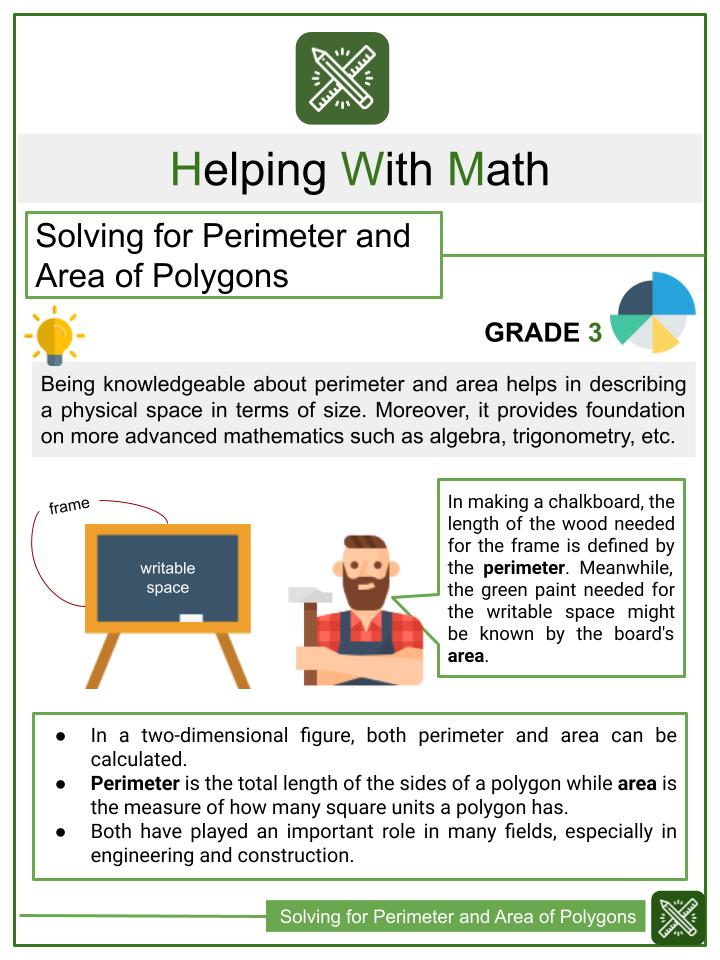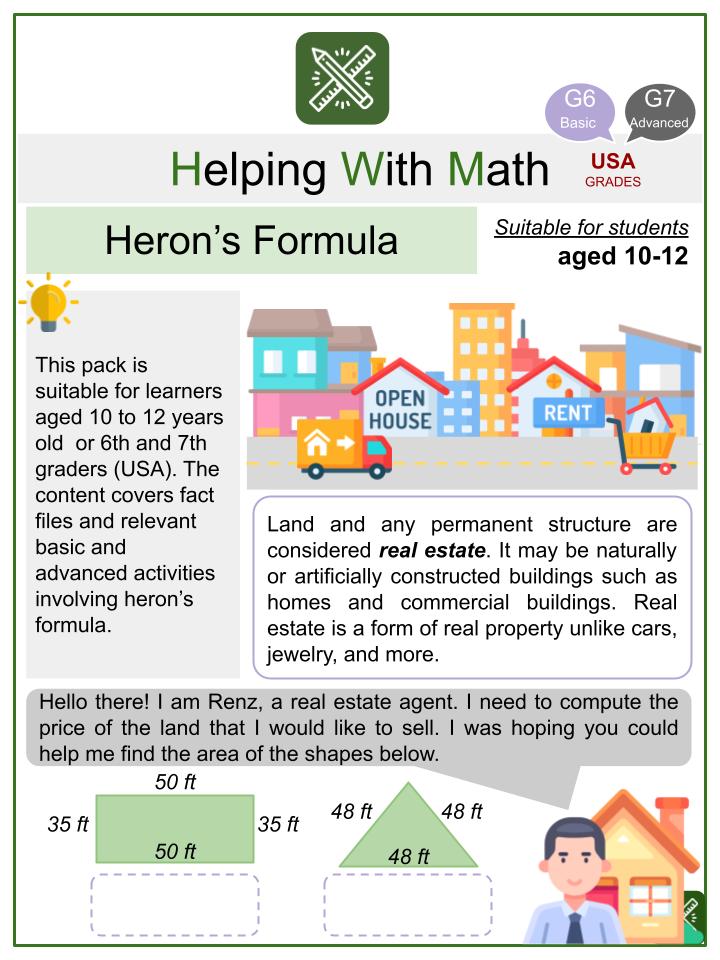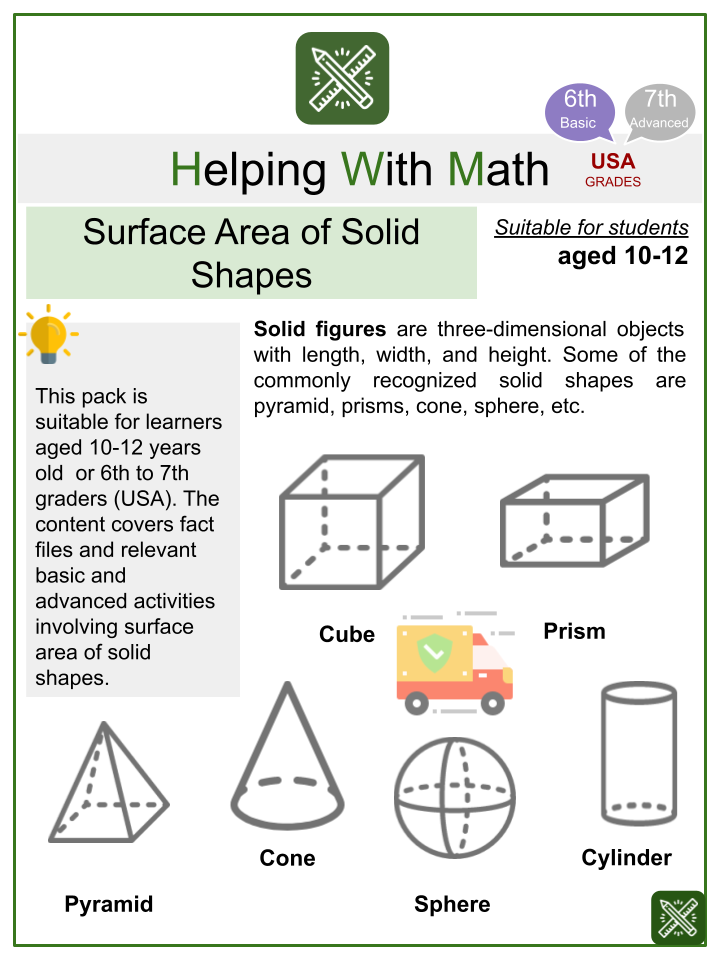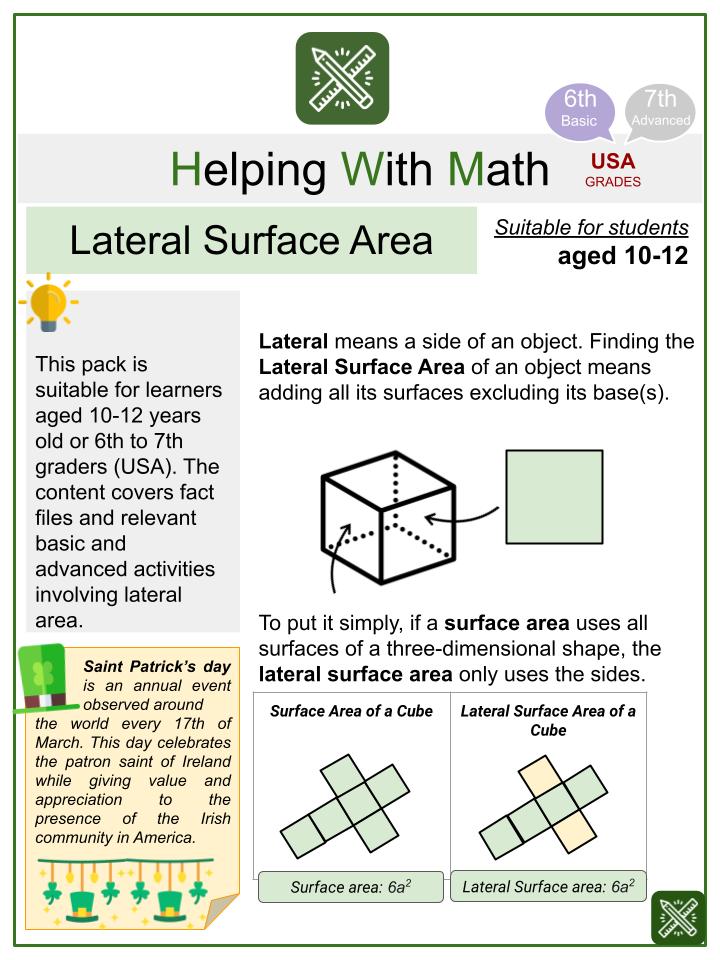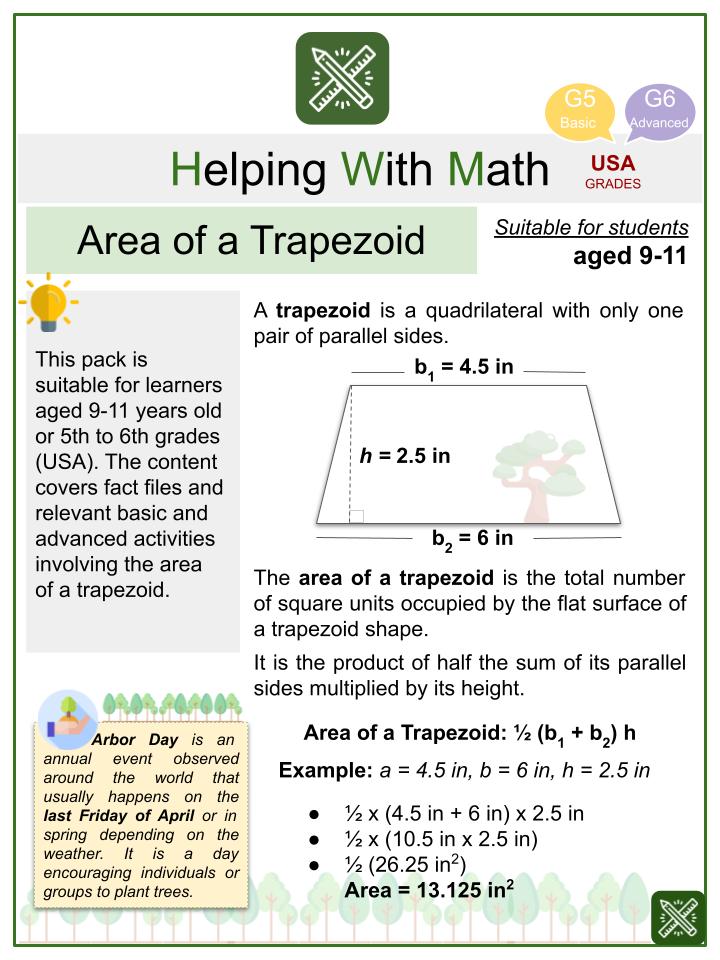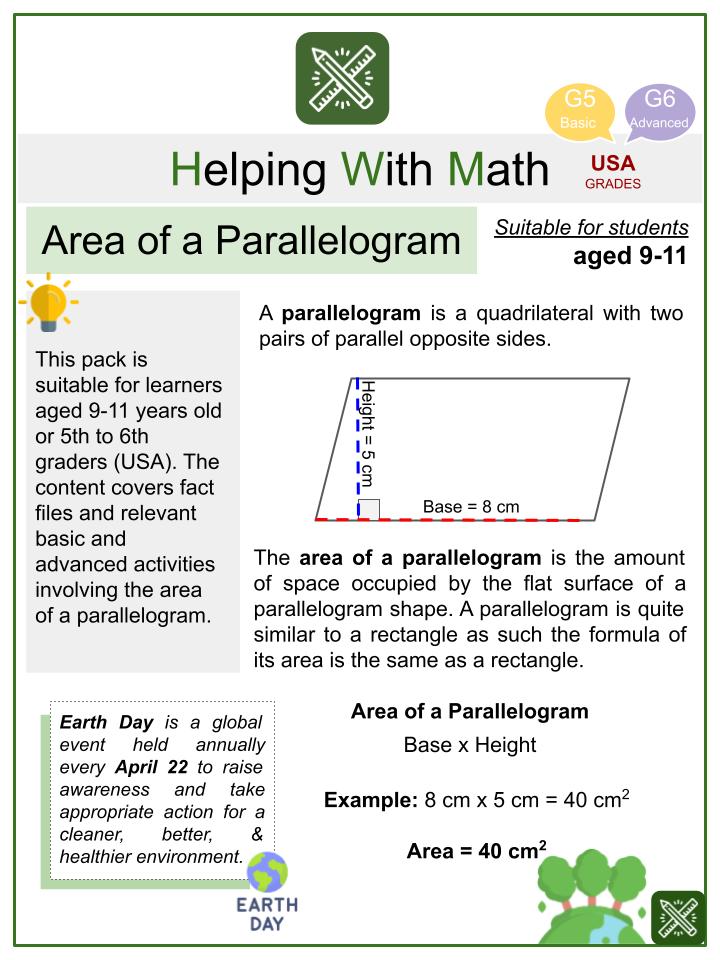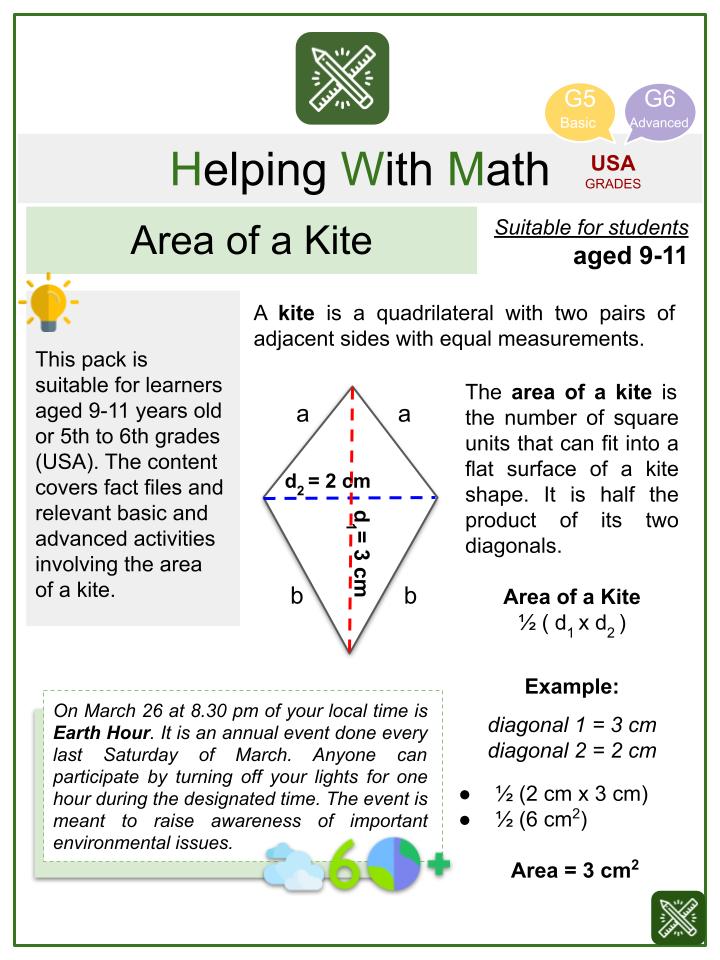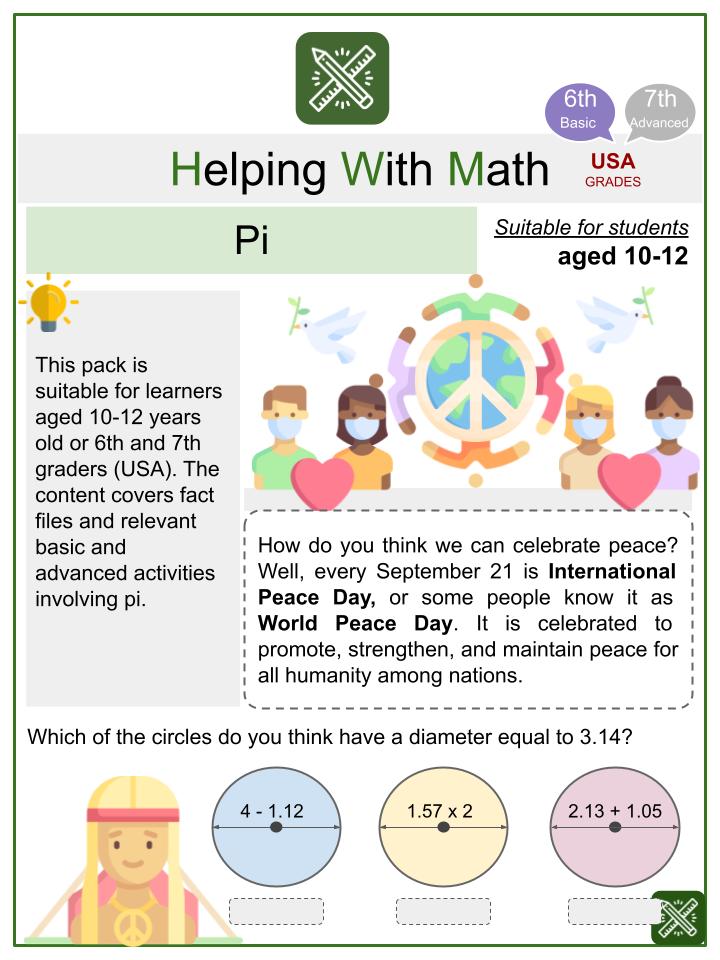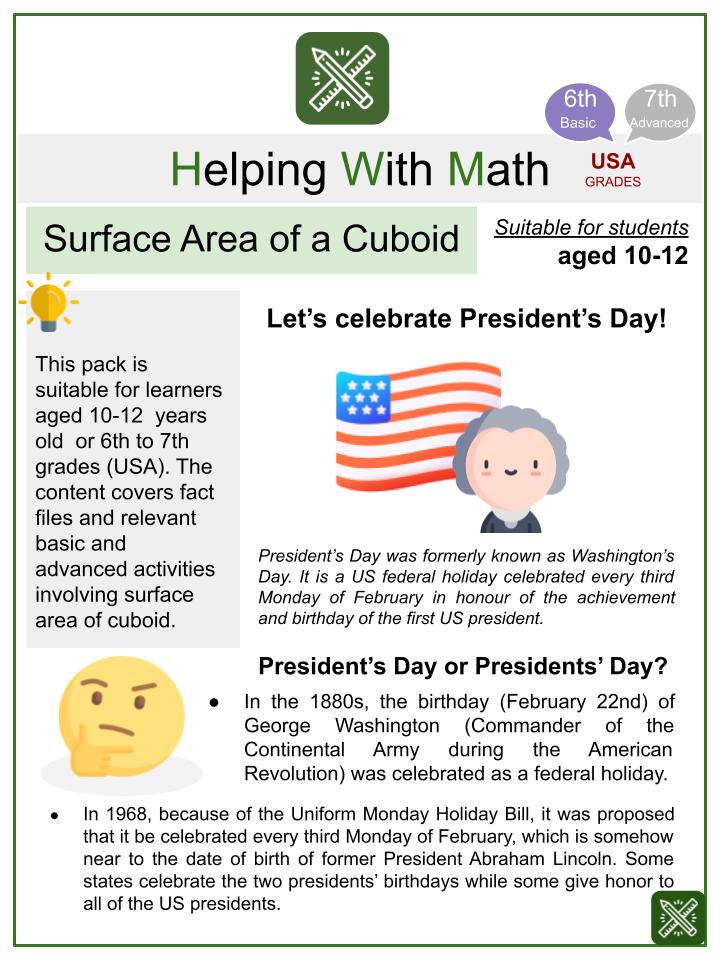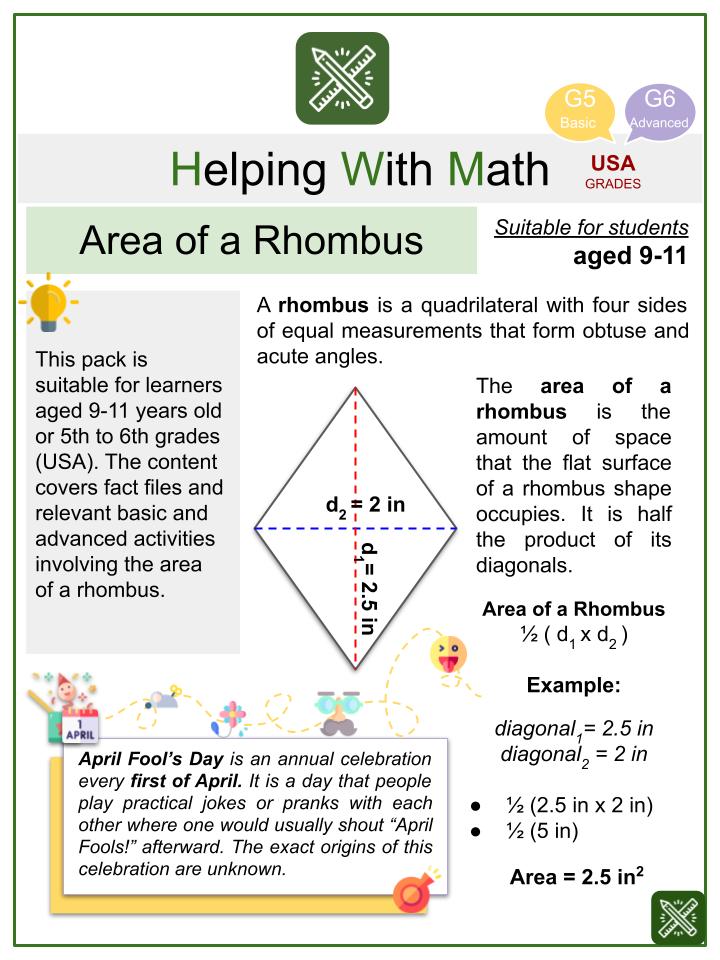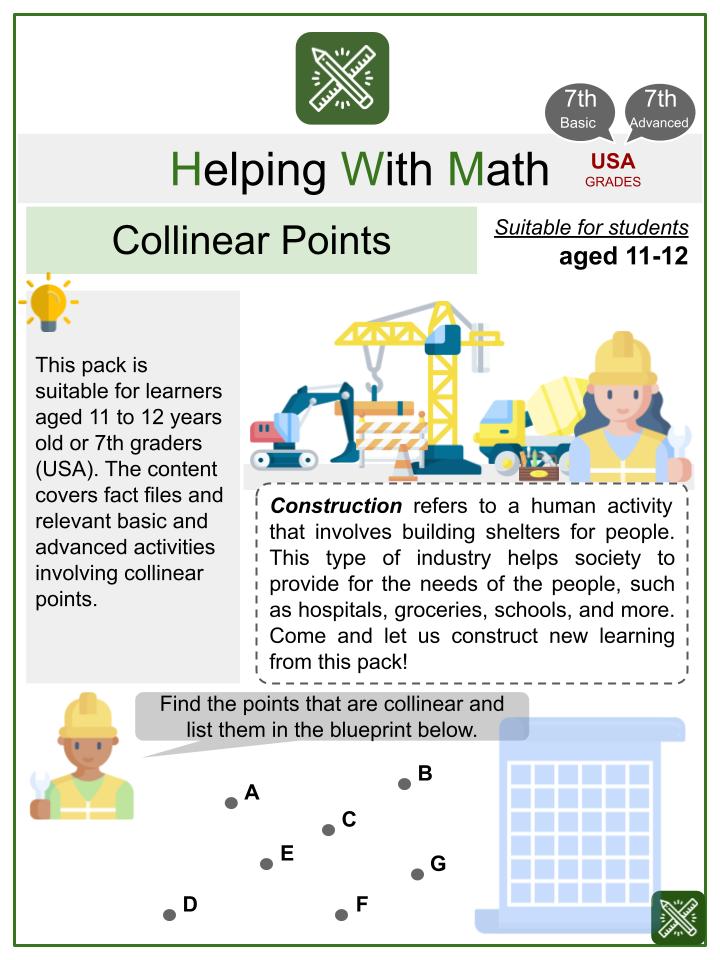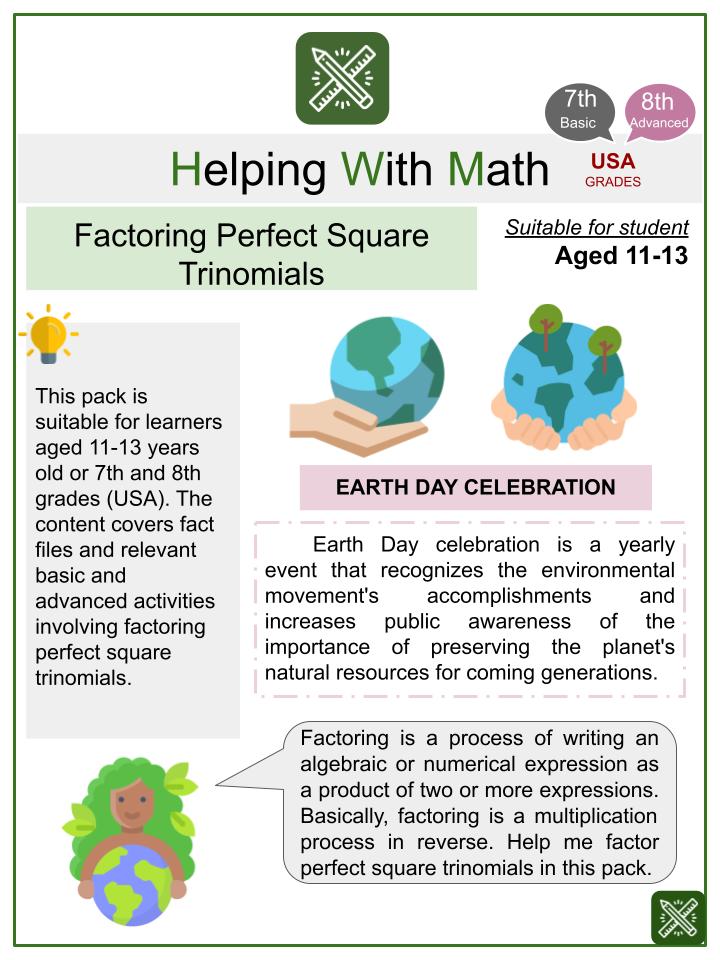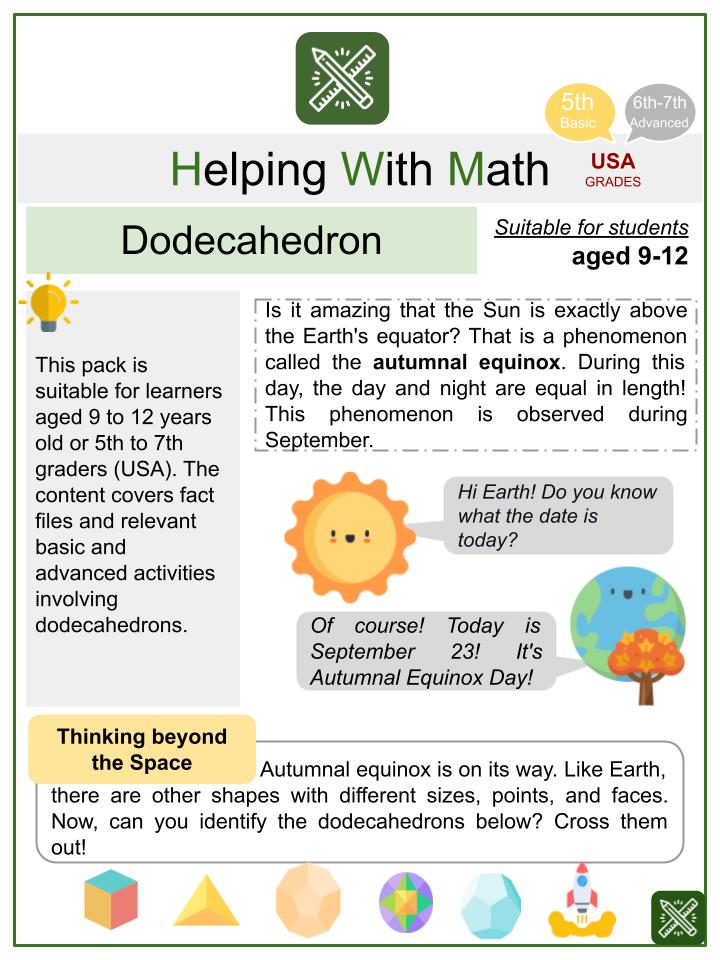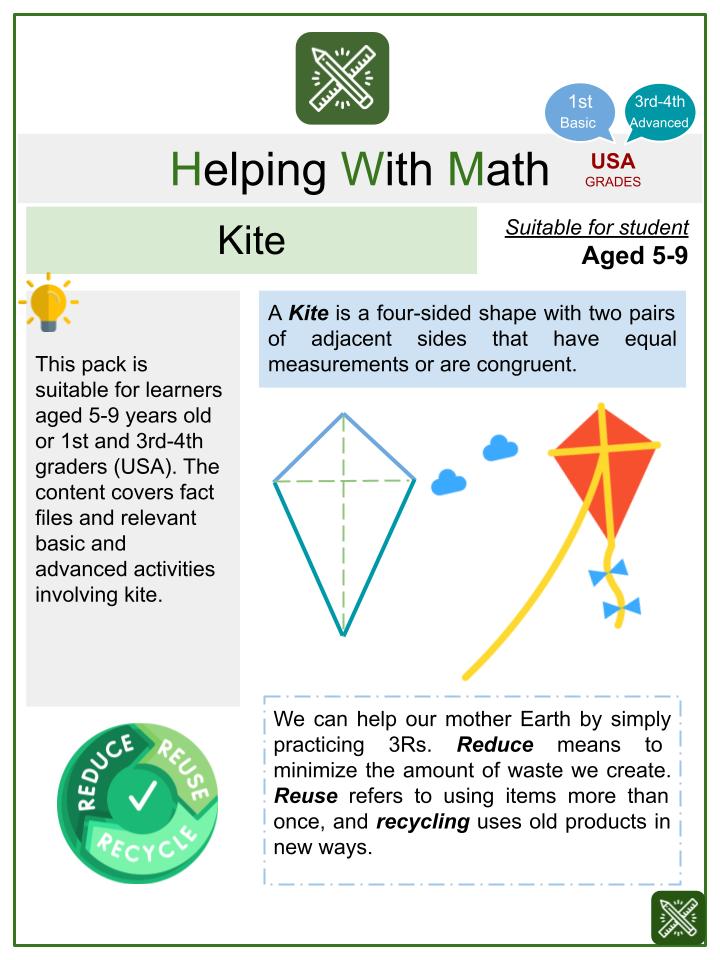Area Math Worksheets
In this section, you can view and download all of our area worksheets. These include common-core aligned, themed and age-specific worksheets. Perfect to use in the classroom or homeschooling environment.
Area Worksheets & Study Resources:
Brief definition
Area is geometrically defined as space or region occupied by a shape or a flat surface. It is expressed as the number of square units covered by a specific region. Units can be square cm, square inches, square feet, square meters, etc. This topic is being introduced to 2nd graders as the number of square grids in a shape or polygon. Young learners are asked to count how many square grids can fit a square, rectangle, trapezoid, pentagon, hexagon, etc. As they move on to 4th grade, the concept of dimension is already given. They use this concept to calculate the area of a certain polygon given its length and width. As this topic is being reinforced in 4th to 5th grades, learners are starting to use formulas in determining the area of a polygon. Lessons involving area extends up to 7th to 8th grade, where they need to show mastery of the lesson and apply it to more complex geometric principles.
Importance of the Topic
Area is vital to understand bigger geometric concepts such as surface area, lateral area, and volume. As these concepts are interrelated, understanding the area in early grades provides a more compact foundation for learning advanced geometric lessons. Also, area is one of the mathematical concepts that have an obvious and direct application in real-life settings. Learning about an area helps people to visualize how vast a particular landmass is. This also aids understanding of cost estimation of a real estate property and more.
Application of the Learned Topic in Life
Understanding the area is very useful in calculating and estimating the covered region of a particular farm or lot. In the world of real-estate properties, determining the area of a house and lot unit is essential in determining its price value. Commonly, a larger area means a higher price value. In doing farm-related work, a smaller farm area means less time for plowing the land. In demography, we can describe the population density of a particular city/country by getting the ratio of the concentration of the individuals over a certain land area.

